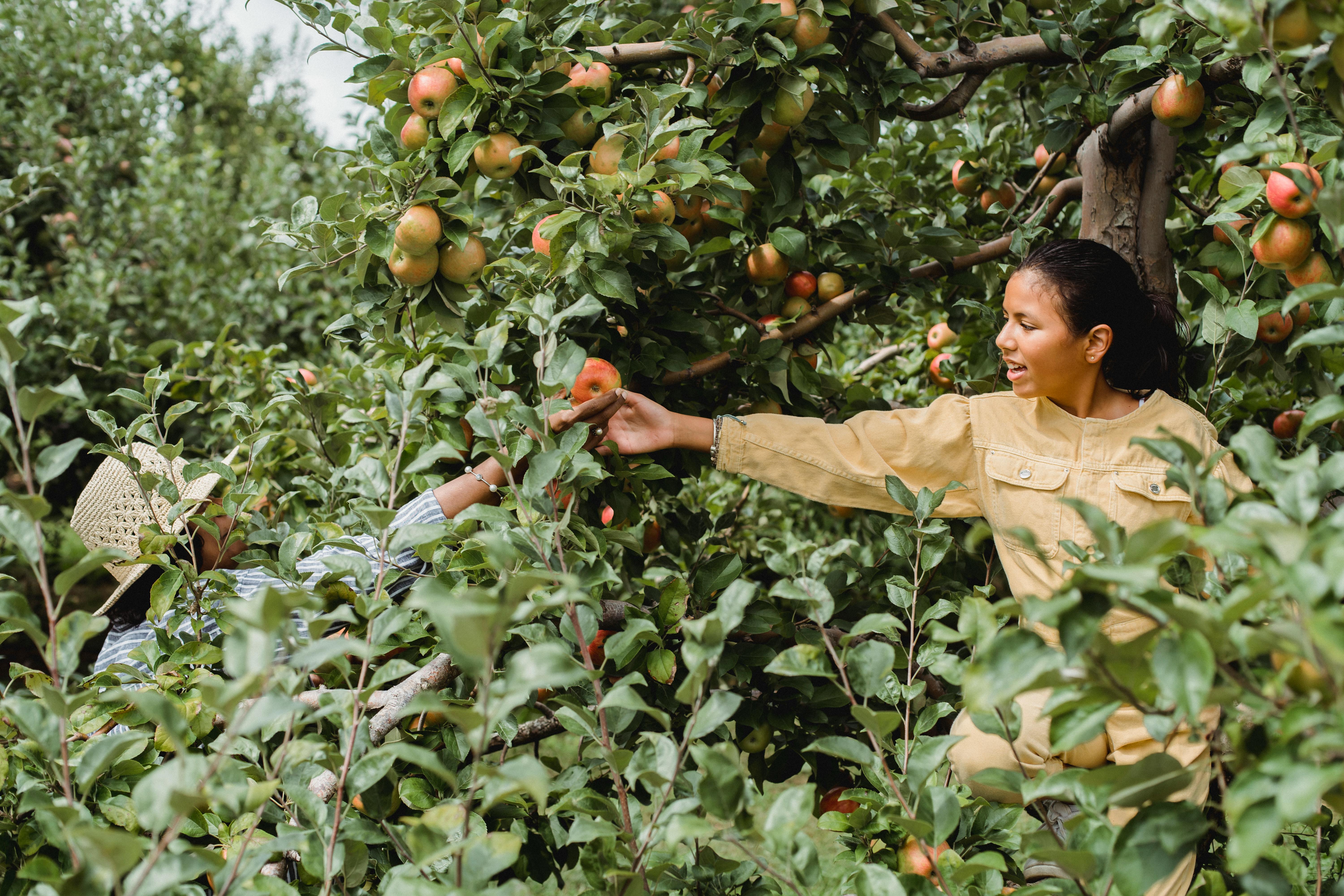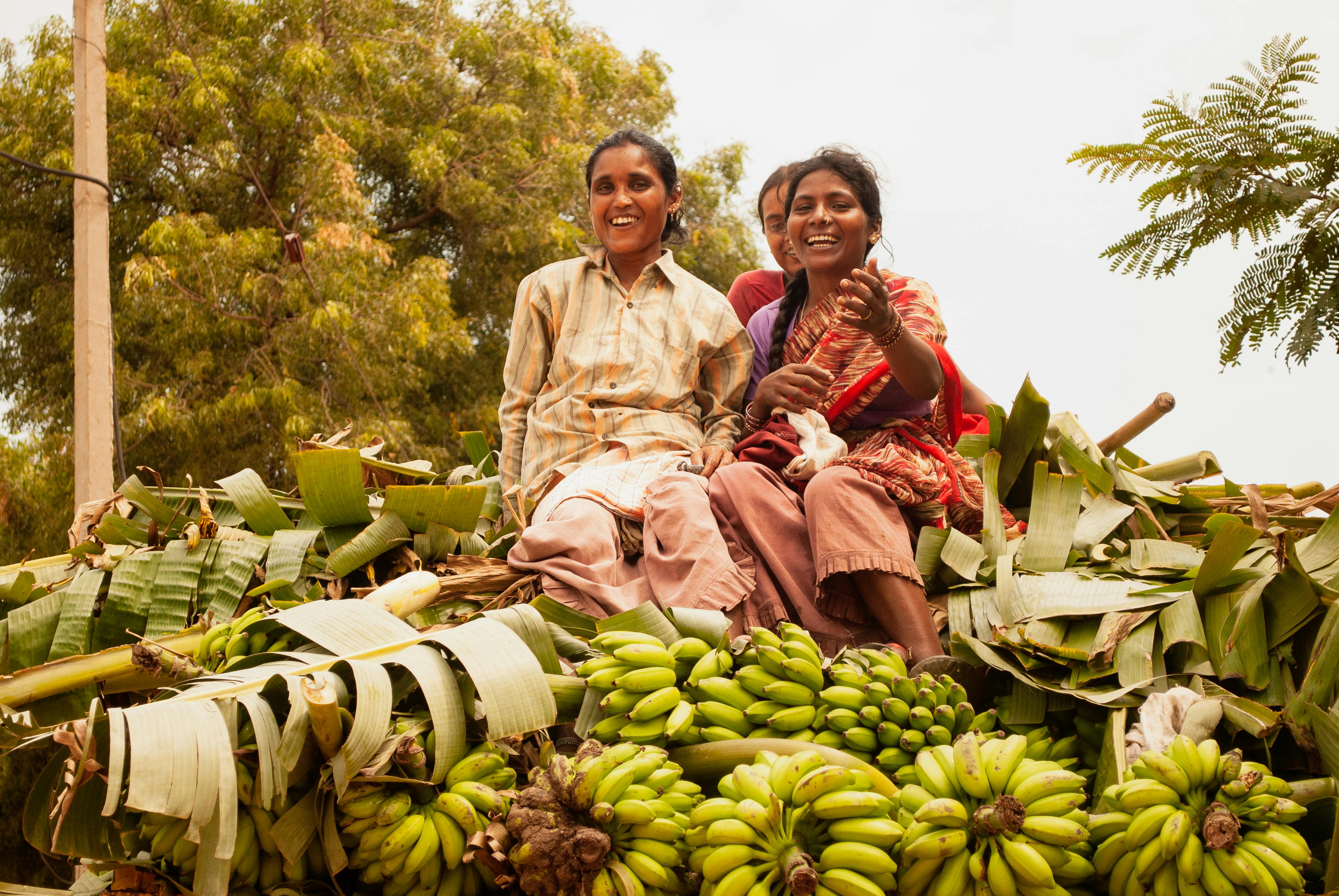Orange trees are beautiful and fragrant, but they also produce delicious fruit. Many people wonder how long do orange trees produce fruit? The answer depends on many factors, such as the type of orange tree, the environment it is planted in, and how well it is cared for. With the right care, an orange tree can produce fruit for many years. In this article, we will discuss the factors that affect how long an orange tree will produce fruit and provide tips on how to care for your own orange tree so it will bear fruit for many years to come.Orange trees can produce fruit for up to 20 years, depending on the variety and growing conditions. Generally, citrus trees start to bear fruit within three to four years after planting.
Climate
The climate is one of the most important factors affecting orange tree fruit production. A moderate climate with adequate amounts of warm days and cool nights is most ideal for orange trees to thrive. Without the proper temperatures, oranges will not ripen as quickly or as sweetly as they should. Too much heat can cause oranges to become overly ripe before they can be harvested, while too little warmth can prevent oranges from ripening at all. In addition, extreme temperatures can cause leaves to drop off prematurely and reduce the overall health of the tree.
Soil Conditions
The condition of the soil where an orange tree is planted will also affect its production. Orange trees require soil that is slightly acidic with a pH between 5 and 6.5 in order for it to grow properly and produce fruit. If the soil has too much alkaline content, it will make it difficult for the tree to absorb nutrients from its surroundings and cause stunted growth and low fruit production. It is also important that the soil be well-draining, as excessive moisture can lead to root rot and other diseases that could harm the tree’s health.
Fertilization
Regular fertilization is essential for orange trees to reach their maximum yield potential. Fertilizers should be applied in early spring when new growth begins, and again during late summer or early fall after harvesting has finished for optimal results. Fertilizers should contain nitrogen, phosphorus, potassium, magnesium, calcium, sulfur, manganese, zinc, boron and copper in order to provide comprehensive nourishment for the tree’s roots and leaves.
Irrigation
In order for an orange tree to produce fruit successfully, it’s important that it is adequately watered throughout its growing season. During periods of hot weather or drought conditions in particular, regular irrigation will be necessary in order to prevent dehydration or nutrient deficiencies that could lead to poor fruit production or even death of the tree itself.
Pruning
Pruning orange trees on a regular basis helps promote healthy growth by removing any dead or diseased branches that may be weighing down on other areas of the tree. Pruning also helps keep branches contained so they don’t become overgrown which could lead to reduced fruit production due to lack of sunlight reaching certain parts of the tree. Additionally, pruning encourages new buds which could result in more flowers leading ultimately more oranges being produced by your trees!
Various Varieties of Orange Trees and Their Fruiting Habits
Orange trees are popular fruit trees that can be found in many parts of the world. There are a variety of different types of orange trees that are grown for their sweet, juicy fruits. Each type of orange tree has its own unique fruiting habits, which can affect the size, shape, and flavor of the fruit produced. Here are some of the most common varieties of orange trees and their fruiting habits.
The Valencia orange tree is one of the most popular varieties for both commercial and home orchards. These trees produce medium to large oranges that have a sweet flavor and a thin, smooth skin. Valencias usually begin to bear fruit in late winter or early spring and continue producing until late summer or early fall.
The Navel orange tree is another popular variety with large, round oranges that have thick skin and a sweet-tart flavor. The navels usually start to bear in late winter or early spring and continue to produce until late summer or early fall as well.
The Mandarin orange tree produces smaller, sweeter oranges with thin skin that are easy to peel. The mandarins usually start bearing fruit in late winter or early spring and will continue to produce until late summer or early fall.
The Murcott orange tree produces medium-sized oranges with a tart flavor and thick skin that’s easy to peel. The Murcotts tend to bear fruit from mid-winter through mid-spring and then again from mid-summer through fall.
Finally, the Temple orange tree produces small oranges with a sweet flavor and thin skin that’s easy to peel off. These oranges typically start bearing fruit in mid-winter through mid-spring and again from mid-summer through autumn.
These are just some of the most common varieties of orange trees and their fruiting habits. With so many different types available, there’s sure to be one perfect for any garden!
Soil Requirements for Optimal Orange Tree Fruit Production
Soil is an important component for optimal orange tree fruit production. It should be well-draining, nutrient-rich, and slightly acidic (pH of 6.0 to 6.5). The soil should also be free of weeds, diseases, and pests. In addition, it should be able to retain moisture and have good aeration. Amending the soil with organic material such as compost or manure will help provide the necessary nutrients and improve soil structure.
It is important to check the soil regularly to ensure it meets the requirements for optimal orange tree fruit production. If the soil pH is too high or too low, it may need to be adjusted by adding lime or sulfur to raise or lower pH levels respectively. Additionally, if the soil is not draining properly or has poor aeration, it may need to be amended with sand or other materials to improve drainage and aeration.
Good irrigation practices are also essential for optimal orange tree fruit production. Watering should be done in a way that prevents water from pooling around the base of the tree and encourages deep root growth without causing root rot or fungal diseases. As a general rule, deeply water trees once every week during active growth periods in spring and summer and reduce watering frequency in fall and winter when plants are dormant.
Finally, mulching around the base of orange trees can help maintain moisture levels in the soil and reduce weed growth. It also helps add organic matter back into the soil over time as it decomposes, further improving its structure and fertility levels.
In conclusion, providing well-draining, nutrient-rich soil with good aeration and proper irrigation practices are essential for optimal orange tree fruit production. Amending soils with organic material such as compost will help provide necessary nutrients while mulching can help maintain moisture levels in the soil while reducing weed growth over time. Regularly checking soils can ensure that they meet requirements for optimal fruit production throughout all stages of tree growth
Pruning Your Orange Tree for Maximum Fruit Production
Pruning is an essential part of caring for an orange tree, as it helps to maximize fruit production. Properly pruned trees are healthier and more resistant to disease and pests. Pruning also encourages new growth, which leads to higher yields of oranges. Here are some tips on how to prune your orange tree for maximum fruit production:
- Prune the branches that have grown too close together. These branches can block light from reaching other parts of the tree, preventing them from producing fruit.
- Remove dead or diseased branches as soon as possible. These can spread disease throughout the entire tree.
- If there are any branches that are growing in an undesirable direction, such as towards a building or structure, they should be pruned back.
- Thin out overly dense areas of the canopy by removing some of the smaller branches. This will allow more light and air to reach all parts of the tree.
When pruning your orange tree, it is important not to remove too much at once. Over-pruning can weaken the tree and reduce its ability to produce fruit. Prune no more than one-third of the total foliage at any one time. It is also important to use sharp tools when pruning so that you do not damage the bark or stems of the tree.
Finally, it is important to remember that pruning will not immediately result in an increase in fruit production. It may take several years before your orange tree begins producing large amounts of oranges due to increased light and air circulation throughout its canopy. However, if you keep up with regular pruning practices, your orange tree should eventually yield larger crops each year!

Maximizing Orange Tree Fruiting Through Irrigation Methods
Irrigation is an important factor in producing healthy and abundant fruit from orange trees. Proper irrigation can help ensure the tree’s roots are able to access the water and nutrients needed for optimal growth and fruiting. The type of irrigation used, the amount of water applied, and the frequency of irrigation all have an impact on how much fruit a tree produces. Here are some tips to maximize orange tree fruiting through effective irrigation methods.
The most common type of irrigation for orange trees is drip irrigation, which delivers water slowly and directly to the tree’s roots. Drip systems are usually made up of a series of emitters that slowly release water into the soil around the tree’s root zone. This type of system allows for more efficient water use, as it helps reduce runoff and evaporation losses. It also helps keep foliage dry, reducing disease risks from plant fungi, bacteria, and viruses that thrive in wet conditions.
When irrigating orange trees with a drip system, it’s important to apply water evenly over the entire root zone. The amount of water applied should be based on soil type, climate conditions, and other factors such as tree size and canopy cover. Generally speaking, it’s best to irrigate deeply but infrequently; this means applying enough water so that it reaches down several inches into the soil where most of a tree’s roots are located but not irrigating so often that there is standing or pooling water around the base of the tree.
In addition to drip irrigation systems, other types of overhead sprinklers can also be used to irrigate orange trees. These systems typically involve larger emitters or sprinkler heads that release larger amounts of water over a wider area than drip systems do. While these systems may be more efficient for larger areas or irregularly shaped root zones, they can cause runoff if used too frequently or if they are not adjusted correctly to minimize evaporation losses and provide adequate coverage over every part of the root zone evenly.
Irrigation frequency should also be adjusted based on climatic conditions such as temperature and rainfall levels; in hot climates with little rainfall during certain times of year, more frequent irrigation may be necessary while in cooler climates with higher rainfall levels less frequent watering may suffice. It’s also important to consider soil types when determining how much water should be applied; clay soils typically require less frequent but deeper watering than sandy soils do since they retain moisture better than sandy soils do.
Overall, proper irrigation is key to maximizing orange tree fruiting by providing essential moisture and nutrients to its roots so that it can produce healthy fruit throughout its growing season. By selecting an appropriate irrigation system for your specific situation and adjusting your watering schedule accordingly you can ensure your orange trees will remain healthy and productive for years to come!
Controlling Pests and Diseases to Increase Fruit Production of Orange Trees
Orange trees are an important crop for many farmers and homeowners. They provide a delicious fruit, as well as a beautiful landscape addition. Unfortunately, they can also be affected by pests and diseases that can reduce fruit production. Fortunately, there are steps you can take to help protect your trees from these problems and increase their fruit production.
The first step in protecting your orange trees from pests and diseases is to properly identify the problem. Many of the most common pests and diseases affecting orange trees can be identified by their telltale signs. For instance, aphids and mites can be identified by their presence on the leaves, while fungal infections like cedar rust are identifiable by their orange-colored spores on the underside of leaves.
Once you have identified the problem, you should take steps to control it. Controlling pests is often done through mechanical means such as pruning or application of insecticides or miticides. Chemical control may also be necessary for more serious infestations or for controlling certain diseases like root rot or citrus blight. It is important to follow label directions when applying any chemicals to your trees, as incorrect use could cause further damage or kill your trees altogether.
In addition to controlling pests and diseases, proper care of your orange trees can go a long way towards increasing fruit production. Regular watering and fertilization will help ensure that your tree has all the nutrients it needs to produce healthy fruits. Pruning is also important for keeping your tree healthy; removing dead branches helps improve air circulation which helps prevent fungal infections from taking hold in the tree’s canopy. Finally, providing adequate space between plants will help reduce competition for nutrients between them while increasing airflow which helps keep pests at bay.
By following these simple steps you can help protect your orange trees from pests and diseases while increasing their fruit production at the same time!
Supplements and Fertilizers for Better Yields of Oranges
Oranges are a popular fruit that are enjoyed all over the world. They are a great source of nutrition, with Vitamin C being the most abundant nutrient. To ensure that you get the highest yield of oranges from your trees, it is important to use the right supplements and fertilizers.
The first step in managing your orange trees is to choose the right soil type. Oranges prefer well-draining soil with a pH between 6 and 7. If your soil does not meet these requirements, you may need to add amendments such as gypsum or lime to adjust the pH level of the soil.
Once you’ve chosen an appropriate soil type, it is time to consider what supplements and fertilizers you will use on your orange trees. For starters, a balanced fertilizer such as 10-10-10 or 12-12-12 should be used on your orange trees twice a year – once in early spring and then again in late summer. This will help ensure your trees get all the nutrients they need for healthy growth and fruit production.
In addition to a balanced fertilizer, supplementing your orange tree with micronutrients can be beneficial as well. Chelated iron can be added to improve foliage coloration and prevent yellowing leaves due to iron deficiency. Calcium nitrate can also be added to promote healthy root growth and increase fruit quality.
Finally, it is important to make sure that your orange tree has adequate water throughout its growing season. Deep watering at least once a week is recommended during dry periods, but make sure not to over water – this can lead to root rot or disease problems for your tree.
By following these simple steps and using the right supplements and fertilizers on your orange trees, you can ensure that you get high yields of juicy oranges each year!

Conclusion
Orange trees can produce fruit for many years, though the exact lifespan can vary depending on the type of tree and the environmental conditions. Generally, most orange trees start producing fruit within a few years after being planted and can continue to do so for up to 25 years. As long as the tree is regularly pruned and well taken care of, it should continue to bear fruit year after year. Additionally, orange trees have a number of other benefits such as providing shade and creating a beautiful landscape.
In conclusion, orange trees are an excellent choice for anyone looking to add some color and life to their garden or yard. Not only do they produce delicious oranges year after year but they are also relatively easy to maintain and provide a number of other benefits. With proper care, an orange tree will continue to provide sweet oranges for many years to come!



